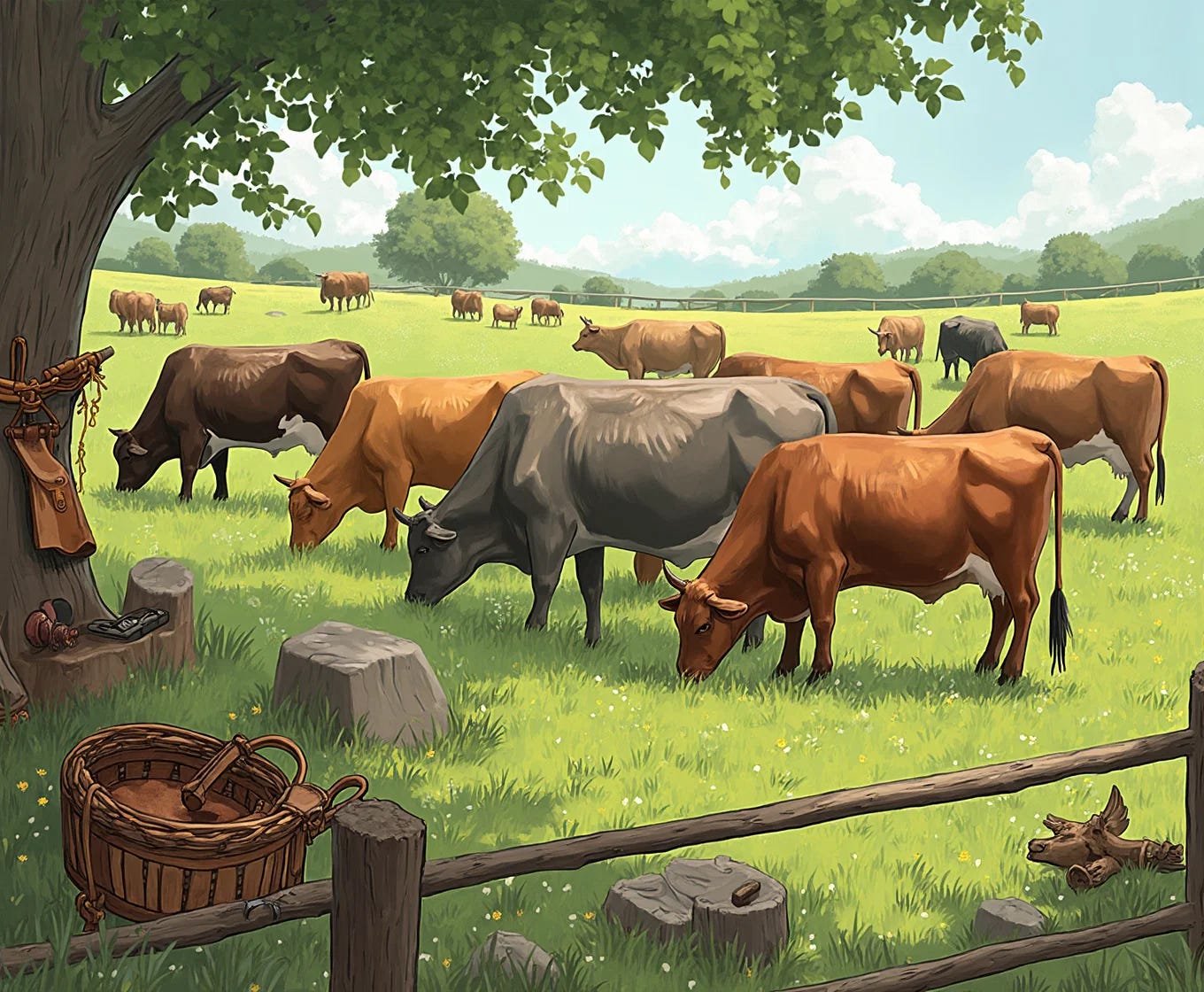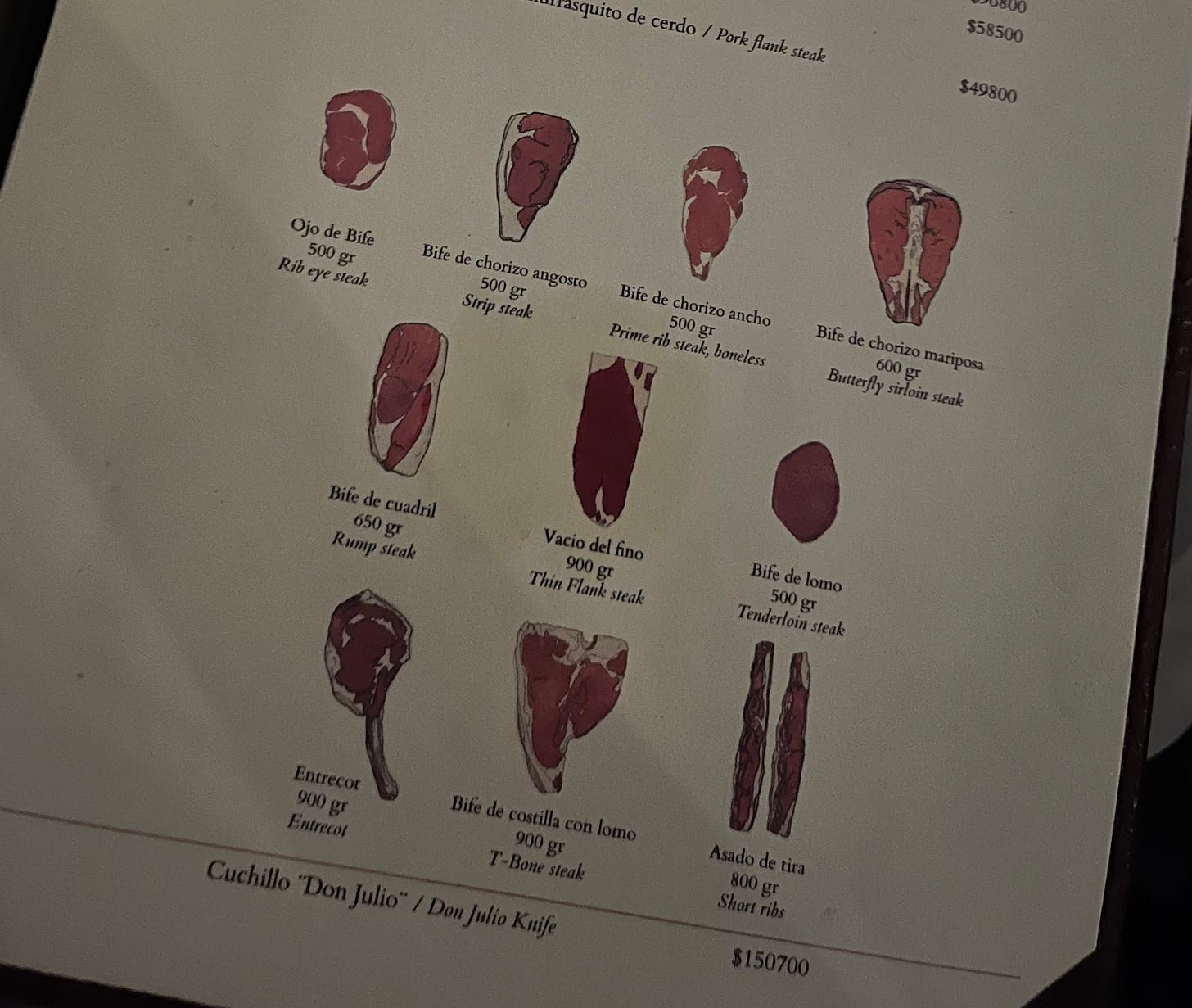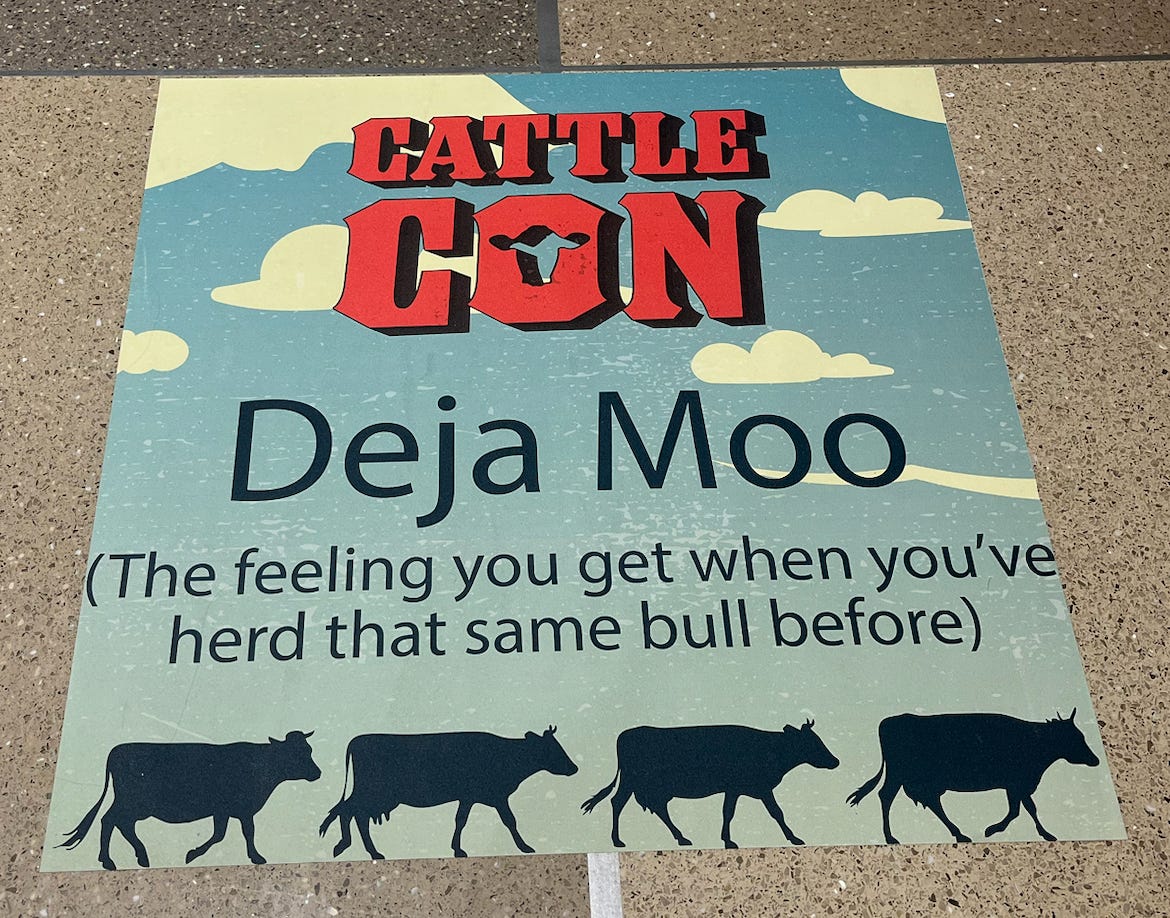Moo
Original post on Substack: Moo
 Generated by Lexica
Generated by Lexica
My last month has been a beef-filled era. In January, I spent a week in Argentina, where beef and leather products are two of the country’s biggest exports. Then, just last week, I found myself at CattleCon, the largest beef industry conference1 in America.
I usually don’t reach for red meat. Seafood and chicken are my go-to’s (much to the beef industry’s dismay). Part of that comes from my admittedly surface-level understanding of beef’s environmental impact and the health concerns I’ve read about but never fully explored. The rest is just personal preference. I was first exposed to the idea of stewarding the beef industry when I read Double Bind as a teenager, stumbling across the Meat Collective Alliance, a non-profit focused on whole-animal butchery, charcuterie and cookery, and humane slaughter. It was the first time I saw beef framed as something that could be consumed sustainably, rather than just an environmental liability. Beyond that initial exposure, I never thought much deeper about it and simply defaulted to avoiding red meat.
But in Argentina, beef was the default. One afternoon, we ordered Milanesa, a breaded protein dish similar to schnitzel, without thinking much of it. I didn’t even realize it was beef until halfway through the meal when I inspected the contents and found a thin tenderized slice of red meat nestled between the breading.
During my week in Buenos Aires, we were lucky to snag two reservations at two iconic parillas2. At Don Julio, hailed as the world’s best steakhouse3 , we had a melt-in-your-mouth ojo de bife. A few nights later, we had a bone-in tomahawk at a less-famous-but-just-as-good steakhouse down the street, La Carniceria. I finally understood what good steak was supposed to taste like. These cuts were tender without being mushy and had a flavourful umami taste that wasn’t overpowering. I don’t even have the right words to describe just how much better these steaks were than anything I’d had before.
The prominence of the cattle industry in Argentina wasn’t just in the food; it was everywhere. Leather and cattle byproducts were a big part of the Argentinian economy. Every street market or fair we visited had vendors proudly advertising Argentinian milk and leather. From conversations with vendors, I learned about full-grain, top-grain, and blended leathers, as well as the different grades of shearling.
Leather production in Argentina, like in most parts of the world, is a by-product of the beef industry—cows aren’t specifically raised or slaughtered for leather. Learning this reframed how I thought about leather against “vegan” alternatives, often a word to disguise cheaper polyester and synthetic leather substitutes in fast fashion. If we’re already consuming beef, buying leather products crafted by local artisans feels like a way to support the full utilization of the animal while also supporting regional economies. Real leather is also more durable and long-lasting than its synthetic counterpart. I ended up leaving with two leather jackets and learned way more about different grades of leather and cuts than I expected from casual retail therapy.
Returning to the U.S., I found myself diving even deeper into the world of beef at CattleCon4. Every conference meal had a beef element— little beef pot pies, classic Texas barbecue, and brisket sandwiches. Coming out of my Argentinian beef daze, I was more open to eating beef than I normally would’ve been. And to my surprise, I enjoyed a lot of the beef-centric meals. That said, for one of the lunches, I was all beefed out and just wanted green beans and macaroni. I caught a couple of judgmental looks from the servers and other attendees for not opting for the beef entree.
After a few days of chatting with ranchers and listening to cattle talks, the beef industry jargon started to stick. I internalized terms like heifer, steer, bull, exposed5 and culled6. The beef industry loves its euphemisms. At one point, I was in a feed and genetics innovation talk and it took me 20 minutes to realize that innovation in AI meant Artificial Insemination, not Artificial Intelligence.
I learned that the word cow, in cattle terms, refers specifically to female bovines that have birthed one or more calves. A heifer is a female that hasn’t calved yet—once she does, she officially graduates into cow status. A steer is a castrated male bovine, while a bull is an intact male, typically kept for breeding (or for making a dramatic appearance at rodeos). I’ll have to remember that when I’m looking out of the window on a drive shouting “COW!” that not every cow-looking animal out there is, in fact, a cow.
At the highly attended CattleFax (a beef industry research firm) talk, they broke down how beef is stacking up against its competitors—mainly poultry and pork. Consumer demand for beef in the U.S. has dipped below chicken, but consumers are willing to pay more per pound of beef than ever before so they reassured attendees that the beef industry is still positioned in a good place. At the same time, poultry prices have barely risen to match inflation. They didn’t even list seafood as a contender in the competition.
At the conference, I was surprised to see imagery of cows grazing peacefully on expansive green fields — a wholesome, pastoral depiction of happy cows, the idealized version of ranching. While the next booth over would be showcasing slaughterhouse and cattle handling equipment. In the beef industry, this isn’t a contradiction. These animals exist entirely because of their role in the food system. That reality is something I’m still coming to terms with.
My main takeaway from the conference was that the beef industry takes great pride in providing what they see as a nutritious, wholesome, all-American protein source. It was a shift from the usual “beef is bad for the planet” narrative I come across in my daily scrolling. It was a good reminder that perspectives on food, sustainability, and ethics aren’t always as clear-cut as they seem.
The last day of CattleCon coincided with the opening night of the San Antonio Rodeo, a two-week event that draws cowboys and cowgirls from across America to compete in a bracket-style tournament. The conference fully embraced the rodeo as the official afterparty and entire sections of the stands lit up with the orange wristbands given to CattleCon attendees.
This rodeo was unlike anything I’d seen before. I went to my first one last year at the National Western Stock Show in Denver, but the energy in San Antonio was on a whole different level.
There was the typical bull riding which was what I saw at the Denver rodeo. Then came Bronc riding which is essentially the same except it’s a bucking horse instead of a bull. But things got crazier. I watched steer wrestling, where grown men sprinted out, grabbed a steer by the horns, and wrestled it to the ground. There were various lasso events where cowboys and cowgirls had to rope a bull with precision and speed. But the wildest part wasn’t the main events—it was the intermission.
They brought out kids, some as young as six, barely old enough to string together full sentences, to compete in junior rodeo events. In the kids' bull riding competition, instead of bulls, they rode sheep—shorn down to bare skin except for a tuft of wool left for handholds. Then, at one point, about 20 kids were let loose in the arena as a herd of calves was released. The goal? Chase down the calves and wrestle them into a harness. It was absolute chaos and wildly entertaining. Everything really is bigger and better in Texas.
In many ways, the rodeo was the perfect finale for my cattle-themed month. Putting faces, families, and personal histories behind the beef industry gave me a more complex perspective on the work behind one of the world's most popular proteins. Many attendees wore cowboy hats and flare boot jeans unironically—this wasn’t a costume but a reflection of their everyday lives. Some had been in the industry for five generations, their livelihoods tied to cattle in a way that went beyond business. For them, beef wasn’t just a food choice or climate debate; it was their legacy.
The conference felt more like a reunion than a trade show, with ranchers, suppliers, and processors deeply embedded in an ecosystem that has shaped their families for decades. The lifestyle, the pride, and the deep-rooted traditions all came to life in that rodeo arena. While I still prefer seafood over beef, I’ve gained a deeper understanding of ranching and a newfound appreciation for cattle — not just as a product, but as a way of life.
1 self-proclaimed, not fact-checked
2 An Argentinian steakhouse is called a Parilla
3 This one is fact-checked. Don Julio has been listed on the world’s 50th-best restaurant list for years at various rankings. Many food blogs cite it as the best steakhouse in the world.
4 Why tf was I at a beef conference you ask? I work at Ambrook, a company building financial and bookkeeping software for farmers and ranchers. Even though I’m not on a customer or client-facing team, sometimes I go to industry conferences to meet producers and industry players.
5 An exposed cow is one that has been placed with a bull or artificially inseminated but has not yet been confirmed pregnant. The term is used in cattle breeding to indicate that the cow has had the opportunity to conceive, but whether she is actually pregnant still needs to be determined.
6 A culled cow is one that has been removed from a herd, usually due to age, low productivity (like decreased milk production or fertility issues), illness, or injury. While the term culling refers to the selection process, the cow is typically still alive at that stage. However, culled cows are often sent to slaughter, where they may be used for ground beef, pet food, or other byproducts rather than premium cuts of meat. Some culled cows might also be sold to other farms for different uses, but most eventually end up in the beef supply chain.

